[Most Recent Entries] [Calendar View]
Monday, July 19th, 2021
| Time | Event |
| 11:00a | An Introduction to Japanese Kabuki Theatre, Featuring 20th-Century Masters of the Form (1964) 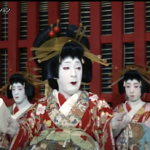 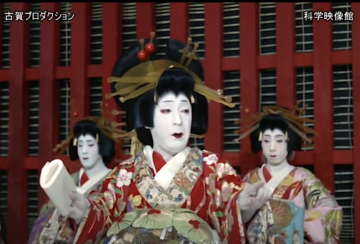 The English language has adopted kabuki as an adjective, applied to situations where exaggerated appearances and performances are everything. Business, politics, media: name any realm of modernity, and the myriad ways in which its affairs can turn kabuki will spring to mind. A highly stylized form of dance-drama originating in the seventeenth century, it continues to stand today as a pillar of classical Japanese culture — and indeed, according to UNESCO, one piece of the Intangible Cultural Heritage of Humanity. The worldwide regard for kabuki owes in part to self-promotional efforts on the part of Japan, whose Ministry of Foreign Affairs commissioned the half-hour introductory film above. Produced in 1964, Kabuki: The Classic Theatre of Japan holds up as a representation of the art, as well as a view of some of the mid-20th century’s master practitioners. These actors include Jitsukawa Enjaku III, Nakamura Utaemon VI, and Ichikawa Danj?r? XI, whose stage names reflect their place in an unbroken professional lineage. In fact, Ichikawa Danj?r? XI is a predecessor of Ichikawa Ebiz? XI, previously featured here on Open Culture for his work in kabuki Star Wars adaptations. The generations shown here didn’t go in for such pop-cultural hybridization, but rather plays from the traditional kabuki repertoire like Shibaraku, Musume D?j?ji, and Sukeroku, scenes from all three of which appear in the film. “Through elaborate costumes and vivid makeup, through beautifully stylized acting and exaggerated vocalization, and highlighted with picturesque settings and colorful music, the kabuki actors create dramatic effects of extraordinary intensity within a framework of pure entertainment,” explains the narrator. And as in the early performances of Shakespeare, all the roles are played by males, specialists known as onnagata. “Because the emphasis in kabuki is on artistic performance, not realism, the onnagata is considered more capable of expressing true femininity than is possible for an actress.” This may have struck Western viewers in the 1960s as an odd notion, but the sheer foreignness of kabuki — cultural, geographical, and temporal — must have been as captivating back then as it remains today, no matter how long we’ve been throwing its name around. Related Content: World Shakespeare Festival Presents 37 Plays by the Bard in 37 Languages: Watch Them Online A Page of Madness: The Lost, Avant Garde Masterpiece from the Early Days of Japanese Cinema (1926) Based in Seoul, Colin Marshall writes and broadcasts on cities, language, and culture. His projects include the Substack newsletter Books on Cities, the book The Stateless City: a Walk through 21st-Century Los Angeles and the video series The City in Cinema. Follow him on Twitter at @colinmarshall or on Facebook. An Introduction to Japanese Kabuki Theatre, Featuring 20th-Century Masters of the Form (1964) is a post from: Open Culture. Follow us on Facebook and Twitter, or get our Daily Email. And don't miss our big collections of Free Online Courses, Free Online Movies, Free eBooks, Free Audio Books, Free Foreign Language Lessons, and MOOCs. |
| 2:00p | Watch 11 Hours of The Pink Panther for Free  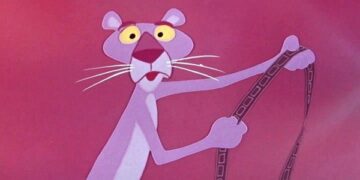 Remember Saturday mornings? If you’re an American of a certain age, you probably spent a good chunk of them sprawled in front of the TV, absorbing a steady stream of network cartoons peppered with ads for toys and sugared cereal. One of Saturday morning’s animated stars stood out from the crowd, a lanky, bipedal feline of a distinctly rosy hue. He shared Bugs Bunny’s anarchic streak, without the hopped-up, motormouthed intensity. In fact, he barely spoke, and soon went entirely mute, relying instead on Henry Mancini’s famous theme, which followed him everywhere he went. Above all, he was sophisticated, with a minimalist aesthetic and a long cigarette holder. Director Blake Edwards attributes his lasting appeal to his “promiscuous, fun-loving, devilish” nature. John Cork’s short documentary Behind the Feline: The Cartoon Phenomenon, below, details how Edwards charged commercial animators David DePatie and Friz Freleng with creating a cartoon persona for the Pink Panther Diamond in his upcoming jewel heist caper. DePatie, Freleng and their team drafted over a hundred renderings in response to the character notes Edwards bombarded them with via telegram. Edward’s favorite, designed by director Hawley Pratt, featured the iconic cigarette holder and appeared in the feature film’s trailer and title sequence, ultimately upstaging a star studded cast including David Niven, Claudia Cardinale, Robert Wagner, and Peter Sellers as Inspector Clouseau. The cartoon panther’s sensational debut prompted United Artists to order up another 156 shorts, to be released over a four to five year period. The first of these, The Pink Phink, not only established the tone, it also nabbed the Academy Award for 1964’s best animated short. Although he was created with an adult audience in mind — the narrator of the original theatrical trailer asks him about bedroom scenes — his wordless torment of the simplified cartoon Inspector proved to be money in the bank on Saturday mornings. The Pink Panther Show ran from 1969 to 1980, weathering various title tweaks and a jump from NBC to ABC. Syndication and cable TV ensured a vibrant afterlife, here and in other countries, where the character’s sophistication and reliance on body language continues to be a plus. The plots unfolded along predictable lines — the groovy panther spends 6 minutes thwarting and bedeviling a less cool, less pink-oriented character, usually the Inspector. Every episode’s title includes a reference to the star’s signature color, often to groaning degree – Pink of the Litter, Pink-A-Boo, The Hand Is Pinker Than the Eye, Pinkcome Tax, The Scarlet Pinkernel…. We won’t ask you to guess the color of Pink Panther Flakes, manufactured under the auspices of Post, a Pink Panther Show co-sponsor. “I thought it was just fine for the film,” Edwards says of the animated Pink Panther in Cork’s 2003 documentary, “But I had no idea that it would take off like that, that it would have that kind of a life of its own… that kind of a merchandising life of its own. Thank god it did!” Stay cool this summer with an 11-hour Pink Panther marathon, comprised of the following free compilations of Seasons 1, 2 and 3. Season 1 Season 2 Season 3 Related Content: How Looney Tunes & Other Classic Cartoons Helped Americans Become Musically Literate Peter Sellers Performs The Beatles “A Hard Day’s Night” in Shakespearean Voice Ayun Halliday is an author, illustrator, theater maker and Chief Primatologist of the East Village Inky zine. Follow her @AyunHalliday. Watch 11 Hours of The Pink Panther for Free is a post from: Open Culture. Follow us on Facebook and Twitter, or get our Daily Email. And don't miss our big collections of Free Online Courses, Free Online Movies, Free eBooks, Free Audio Books, Free Foreign Language Lessons, and MOOCs. |
| 7:43p | Neil Young Plays “Hey, Hey, My, My” with Devo: Watch a Classic Scene from the Improvised Movie Human Highway (1980) 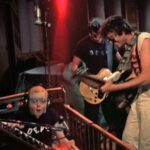 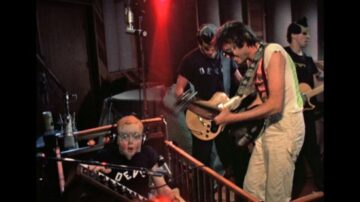 For Neil Young fans, the words “Human Highway” can mean one of three different things, two of which are so unlike the third, it’s as if they came from different artists. First, there’s “Human Highway,” the song, one of Young’s gentle acoustic rags, with Nicolette Larson’s soft vocal harmonies and lots of banjo and fiddle. It landed on 1978’s Comes a Time but debuted five years earlier, nearly becoming the title track for a CSNY album that never materialized, a legendary follow-up to Déjà Vu. None of this has anything to do with Human Highway, the 1980 film directed by Neil Young (as “Bernard Shakey”) and Dean Stockwell, which tells the “story,” if it can be called, of a crooked diner owner in a small down next to a nuclear power plant staffed by the members of Devo as “nuclear garbagepersons.” The cast is cult film royalty: “Dennis Hopper is a psychotic cook named Crackers,” notes critic Steven Puchalski, “Sally Kirkland is a beleaguered waitress; [Stockwell] is the new owner, Young Otto (son of the late Old Otto); plus Neil Young and Russ Tamblyn are frighteningly convincing as two noodle-headed gas pump operators, Lionel and Fred.” The film is set on the last day before a nuclear apocalypse, a slapstick take on the time’s nuclear anxiety and Young’s stance against nuclear power. His nerdy Lionel idolizes rock star Frankie Fontaine (also Young), then becomes him in a dream sequence full of “wooden Indians” — his backing band. He then jams out with Devo for ten minutes (top) one of the highlights of the film, a performance of “Hey, Hey, My, My” with Mark Mothersbaugh taking lead vocals as Devo character “Booji Boy” (pronounced “boogie boy”). “By normal standards,” Puchalski writes, “the movie sucks, but it’s a Mutant Must-See for Rock-‘N’-Schlock Completists.” It could also be one of the most influential indie films of the eighties, argues Den of Geek’s Jim Knipfel, leaving its mark on everything from Alex Cox’s Repo Man to David Lynch‘s Blue Velvet (in which Hopper and Stockwell play somewhat similar characters) and Twin Peaks (in which Russ Tamblyn appears), to Tim Burton’s Pee Wee Herman’s Big Adventure. Or maybe Young “was simply cursed to be ten minutes ahead of his time,” given that hardly anyone saw Human Highway in 1982. Shot over four years, and mostly financed by Young himself, Human Highway saw a limited release in L.A. then disappeared until a 1996 VHS edit of the film brought it some renown and critical reappraisal. (Its cover quoted an agent at William Morris saying, “It’s so bad, it’s going to be huge.”) The film has since become a cult classic, warranting special screenings like a reunion in 2016 at L.A.’s Regal Theater featuring Young, Tamblyn, Devo’s Gerald Casale, actress Charlotte Stewart, and Cameron Crowe. (See a trailer for the DVD director’s cut release just above.) At one point during the Q&A, Young turned to Crowe and asked, “Do you think we could get this movie made today?”. The film was made under unique conditions: “no script, improvised dialogue and a daily routine that began with someone asking him ‘What’s the plan today, Neil?’ to which he always replied ‘The plan today is no plan!'” It could get made, if Neil wanted to finance it (and a younger cast could handle the amount of drugs that clearly went into making the film). Given the number of digital distribution channels and Young’s fame, it could also very likely find a wide audience. But in 1982, releasing a self-financed film, even if you were Neil Young, proved much more challenging. And in the late seventies and early eighties, one of the few ways for innovative New Wave bands like Devo to get wider notice was to catch the ear of stars like Young, who discovered them on stage in 1977 and knew he had to get them on film — before “Whip It” and their first defining hits came out — and show the rest of us what we were missing. Related Content: The Mastermind of Devo, Mark Mothersbaugh, Presents His Personal Synthesizer Collection When Neil Young & Rick “Super Freak” James Formed the 60’s Motown Band, The Mynah Birds Josh Jones is a writer and musician based in Durham, NC. Follow him at @jdmagness Neil Young Plays “Hey, Hey, My, My” with Devo: Watch a Classic Scene from the Improvised Movie Human Highway (1980) is a post from: Open Culture. Follow us on Facebook and Twitter, or get our Daily Email. And don't miss our big collections of Free Online Courses, Free Online Movies, Free eBooks, Free Audio Books, Free Foreign Language Lessons, and MOOCs. |
| << Previous Day |
2021/07/19 [Calendar] |
Next Day >> |









